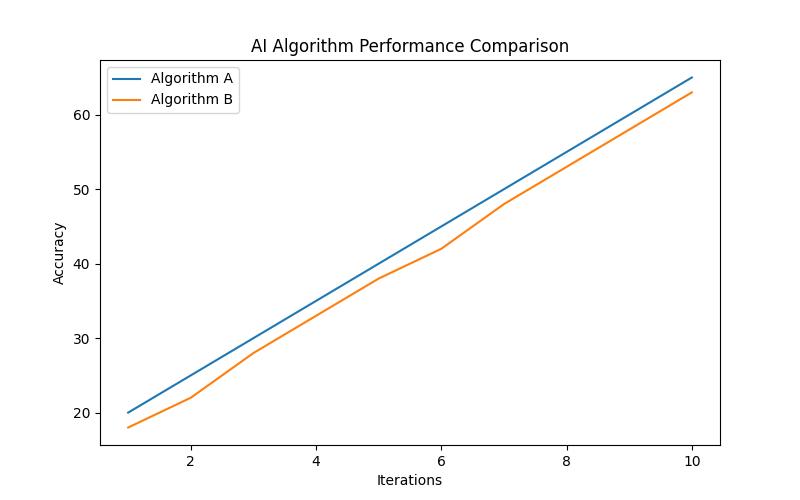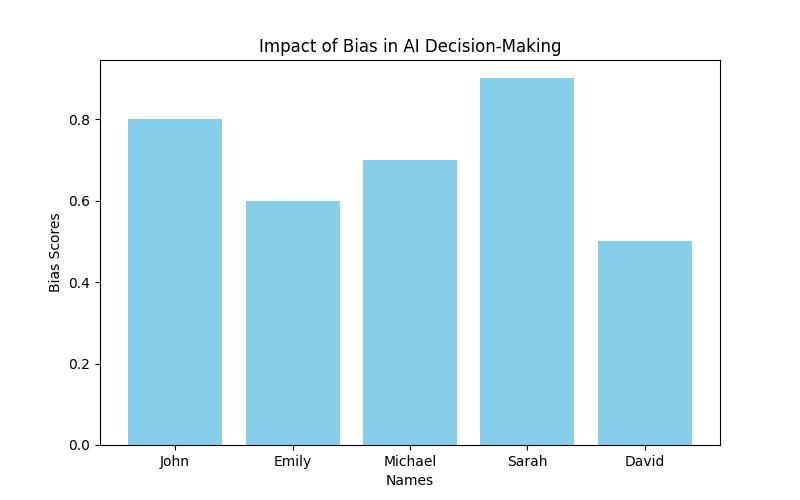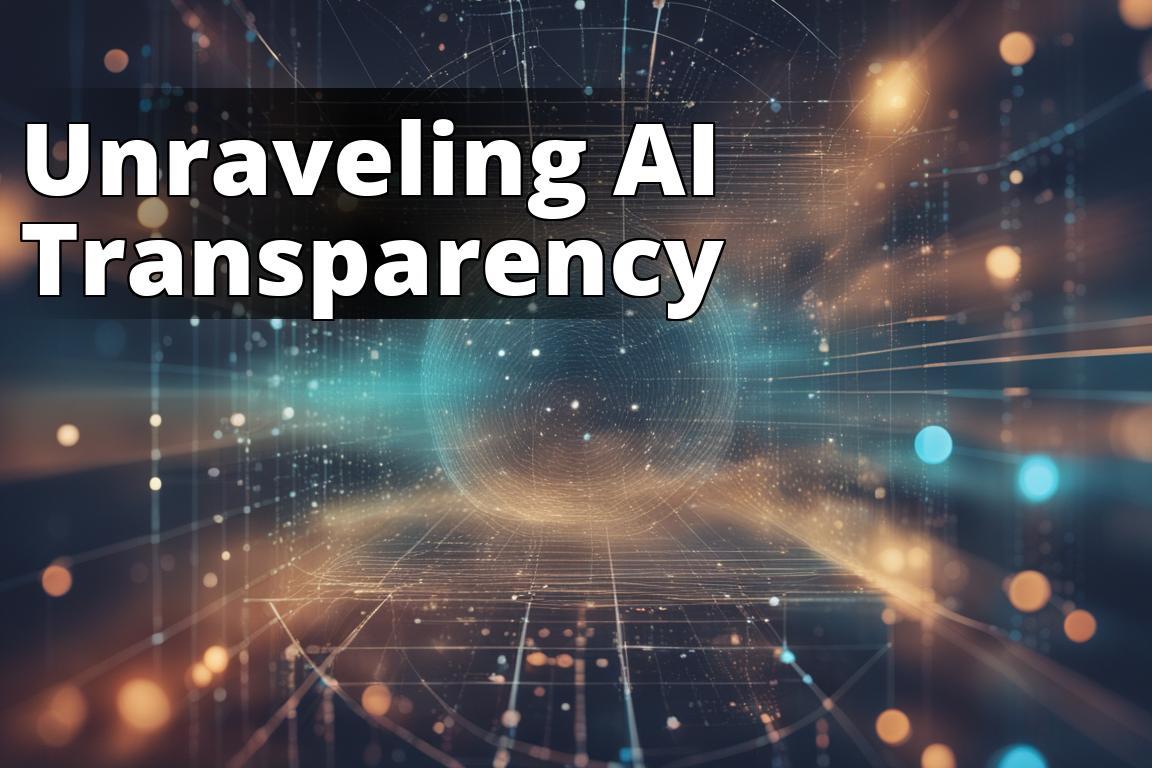Artificial Intelligence (AI) has significantly impacted various industries, revolutionizing processes and improving efficiency. However, ensuring transparency in AI software is increasingly vital as AI continues to advance. This article explores the challenges associated with transparency in AI software, underscores its importance for trust and responsible AI development, and provides real-life examples of transparency challenges in AI software.

Challenges in Ensuring Transparency in AI Software
In this article, you will learn:
– The ethical and trust issues related to AI software
– The potential consequences of lacking transparency in AI
– The importance of addressing challenges for responsible AI development
Challenges of Transparency in AI Software
Ensuring transparency in AI software poses several challenges that require careful attention. The complexity of AI algorithms stands as one of the primary hurdles, often operating as “black boxes,” which complicates understanding for developers, regulators, and end-users. This opacity can lead to distrust, particularly in critical applications like healthcare and finance.
Complexity of AI Algorithms
The complexity of AI algorithms stems from intricate neural network layers and the vast data they process. Interpreting how AI arrives at specific conclusions becomes challenging, raising concerns about bias, accountability, and unintended consequences. For example, in healthcare, if an AI system recommends treatments without transparent reasoning, it can lead to distrust among healthcare professionals and patients.

Addressing Bias and Accountability
Mitigating bias within AI algorithms is a pressing challenge. Biased data can lead to discriminatory outcomes, reinforcing societal inequalities and eroding trust. Holding AI systems accountable for their decisions is also difficult when their inner workings are opaque. For instance, in financial services, opaque AI algorithms can result in biased loan approvals and perpetuate financial inequalities.

Regulatory and Ethical Considerations
Navigating the regulatory and ethical landscape surrounding AI transparency is another significant challenge. Regulators must develop frameworks that promote transparency without stifling innovation. Developers, on the other hand, must consider ethical principles such as fairness, safety, and privacy in AI software development. An example is the challenge faced by regulators in establishing guidelines for transparent AI use in autonomous vehicles, balancing safety with technological advancement.
Striking a Balance
Striking a balance between fostering innovation and safeguarding the public interest is crucial. Collaboration between developers and regulators is essential to establish clear guidelines and standards that promote transparency while nurturing AI advancements. For instance, in the development of AI-driven recruitment software, setting transparent guidelines can ensure fair and unbiased candidate selections.
| Challenges/Considerations | Examples |
|---|---|
| Complexity of AI Algorithms | Intricate neural network layers and data processing; opaque decision-making in healthcare recommendations |
| Addressing Bias and Accountability | Biased data leading to discriminatory outcomes; difficulties in holding AI systems accountable in financial services |
| Regulatory and Ethical Considerations | Balancing innovation with transparency in autonomous vehicles; ethical principles in AI software development |
| Striking a Balance | Collaboration between developers and regulators in establishing transparent guidelines for AI-driven recruitment software |

The Impact of Transparent AI Software
Addressing the challenges of ensuring transparency in AI software significantly influences the broader acceptance and utilization of AI technology. Transparent AI software fosters trust among users, policymakers, and the public, paving the way for responsible and ethical AI deployment.

Fostering Trust and Acceptance
Transparency in AI software builds trust by demystifying its decision-making processes. When users understand how AI arrives at its conclusions, they are more likely to embrace its recommendations. For example, in e-commerce, transparent AI product recommendations can enhance user trust and acceptance of personalized suggestions.
Empowering Ethical Decision-Making
Ethical considerations are crucial in the development and deployment of AI software. Transparent AI systems empower stakeholders to assess the ethical implications of AI-generated outcomes, enabling informed decision-making. This transparency is particularly critical in sensitive domains such as healthcare, where ethical adherence is non-negotiable, enabling medical professionals to make informed decisions based on transparent AI-generated insights.
In conclusion, transparency in AI software is essential for building trust, ensuring accountability, and empowering ethical decision-making. By addressing the challenges and emphasizing the importance of transparency, the AI ecosystem can advance responsibly and ethically.
The Importance of Building Trust Through Transparency
As a software developer, I once worked on an AI project that aimed to automate the decision-making process in a financial institution. During the testing phase, we encountered a critical issue where the AI system consistently favored certain demographic groups over others when approving loan applications. This raised concerns about potential bias and discrimination.
Overcoming the Challenge
To address this, we had to re-evaluate the training data and fine-tune the algorithms to ensure fairness and transparency in the decision-making process. This experience highlighted the critical importance of addressing challenges for trust and responsible AI development. It also emphasized the need for transparency in AI software to build trust among users and stakeholders.
Common Questions
Who is responsible for ensuring transparency in AI software?
Responsible parties include developers, regulators, and ethicists.
What are the challenges in ensuring transparency in AI software?
Challenges include complex algorithms, biased data, and lack of standardization.
How can transparency in AI software be improved?
Improvement can be achieved through explainable AI, unbiased data, and robust testing.
What steps can be taken to address concerns about AI transparency?
Steps include establishing clear regulations, promoting ethical AI practices, and fostering collaboration.
What is the objection to prioritizing transparency in AI software?
Some may argue that transparency could hinder innovation and competitive advantage.
How can the objection to transparency in AI software be addressed?
By demonstrating that transparency can enhance trust, mitigate risks, and drive long-term success in AI development.
Dr. Rachel Adams is a leading expert in the field of artificial intelligence and ethics. She holds a Ph.D. in Computer Science from Stanford University, with a focus on algorithmic transparency and bias in AI systems. Dr. Adams has published numerous research papers on the ethical implications of AI algorithms in reputable journals such as the Journal of Artificial Intelligence Research and the Association for the Advancement of Artificial Intelligence. Her work has been cited in several industry reports and policy briefs, contributing to the ongoing discourse on regulatory and ethical considerations in AI development. Dr. Adams has also served as a consultant for tech companies and government agencies, advising on best practices for ensuring transparency and accountability in AI software. With her extensive knowledge and experience, she continues to advocate for the responsible and ethical deployment of AI technologies to foster trust and acceptance in society.

Leave a Reply